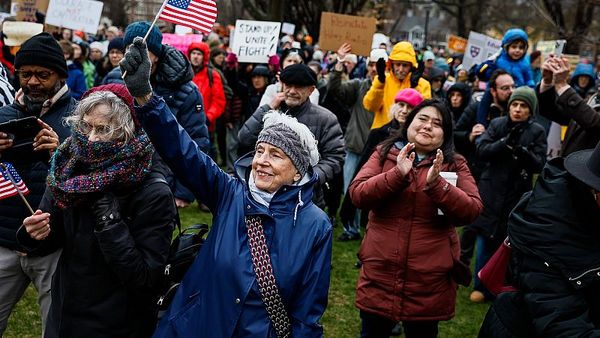The Poll Bludger has summarised the final report of the Joint Standing Committee on Electoral Matters (JSCEM) that was released Monday. The most contentious recommendation is that the number of senators for both the ACT and the Northern Territory be increased from two to four.
In the current 76-member Senate, every state has 12 senators, with half elected at a normal election for the House of Representatives and half the Senate. In a special double dissolution election, all senators are up for election. The ACT and NT have two senators each, with all their senators up at every House election.
Elections use proportional representation with preferences. At a half-Senate election, the quota for election is one-seventh of the vote or 14.3% in a state. In the ACT and NT, the quota is one-third or 33.3%.
The Australian Constitution requires all states to have the same number of senators, so Tasmania is greatly overrepresented. Analyst Kevin Bonham wrote in July 2022 that Tasmania has 21 senators per million people while New South Wales has only 1.5 senators per million people.
Australia overall has three senators per million people, the NT eight and the ACT 4.4. So both territories are already overrepresented in the Senate. Doubling the number of ACT and NT senators would increase the NT’s senators per million people to 16 and the ACT’s to 8.8.
Proponents of more territory senators compare territory representation to Tasmania. But doubling the number of territory senators will increase Senate “malapportionment” – this term is used to describe situations where unequal numbers of people elect parliamentarians.
JSCEM did not recommend staggered terms, so all four NT and ACT senators would be up for election at every House election. The quota for election would drop from one-third to one-fifth or 20%.
For the left to get a 2–0 split in the ACT, they currently need about a 67–33 winning margin over the right. When David Pocock and Labor’s Katy Gallagher won the two ACT senators in 2022, it was the first time the ACT had not split 1–1 between the major parties.
Read more: ACT Senate result: Pocock defeats Liberals in first time Liberals have not won one ACT Senate seat
With four senators, a 60–40 left win would be enough for the left to take three of these four. Bonham said that every federal election since 2007 would have given the left a 3–1 split of ACT senators. So the left would benefit from this increased malapportionment.
The four senators from the NT would be expected to split 2–2 between the left and right.
Essential poll: just a one-point lead for Labor
A federal Essential poll, conducted November 22–26 from a sample of 1,151, gave Labor a 48–47 lead including undecided (49–47 last fortnight). Primary votes were 34% Coalition (steady), 31% Labor (down one), 13% Greens (up one), 7% One Nation (steady), 1% UAP (down one), 8% for all Others (steady) and 6% undecided (up one).
If 2022 election preference flows were used, Labor would be further ahead. But respondent preferences from Essential have been weaker for Labor in the last few months than at the 2022 election.
By 47–42, voters disapproved of Anthony Albanese’s performance, a reversal of a 46–43 approval in October. Peter Dutton’s net approval improved four points to -3. This is the first time in Essential Albanese’s net approval has been negative since he became PM and also the first time he has trailed Dutton on net approval.
The Coalition led Labor by 33–25 on managing the economy and 28–25 on reducing cost of living pressures. Labor led the Coalition by 37–19 on supporting higher wages. Over 65% thought the government’s performance on cost of living and housing affordability was either below average or poor.
Respondents were read a detailed question on the stage three tax cuts that said those earning $200,000 would receive over a $9,000 tax reduction a year, while those earning $60,000 would only receive a $375 reduction.
On these tax changes, 41% said they should be revised so they mostly benefit those on low and middle incomes, 22% said they should go ahead for those earning under $200,000 but be deferred for those earning over $200,000 until conditions improve, 20% said they should go ahead as planned in July 2024 and 16% said they should not go ahead at all.
The problem with this detailed question is that the vast majority of voters would be unfamiliar with the detail of the stage three tax cuts, and could be persuaded by a broken promises campaign from the Coalition if Labor dumped or revised these cuts.
Morgan poll and additional Newspoll question
In the best poll news for Labor since the early November Resolve poll, a federal Morgan poll, conducted November 20–26 from a sample of 1,379, gave Labor a 52.5–47.5 lead, a three-point gain for Labor since last week.
Primary votes were 35% Coalition (down 2.5), 32% Labor (up 2.5), 13.5% Greens (steady), 5% One Nation (down 1.5), 9% independents (up two) and 5.5% others (down 0.5).
In an additional question from this week’s Newspoll that had a 50–50 tie, 50% said they and their family were worse off than two years ago, 16% better off and 34% about the same.
Victorian Mulgrave byelection final results
A Victorian state byelection occurred in Mulgrave on November 18. This seat was previously held by former Labor premier Daniel Andrews. Primary votes were 40.2% Labor (down 10.8% since the 2022 election), 21.7% Liberals (up 4.5%), 18.8% for right-wing independent Ian Cook (up 0.8%), 6.0% Greens (up 0.9%), 3.6% Victorian Socialists (new), 3.1% Family First (up 1.1%) and 2.9% Libertarian (new).
ABC election analyst Antony Green has details of the preference flow. Although Cook was 2.9% behind the Liberals on primary votes, preference flows from the Libertarians and Family First put Cook 0.4% behind the Liberals, and he surpassed the Liberals on preference leakage from the Socialists and Greens to finish 0.4% ahead of them at the point where one was excluded.
Labor then defeated Cook after preferences by 56.5–43.5, a 4.3% swing to Cook since the 2022 election. The electoral commission also provided a two party Labor vs Liberal measure, which showed that if the Liberals had made the final two, Labor would have won by 54.7–45.3, a 5.5% swing to the Liberals.
Adrian Beaumont does not work for, consult, own shares in or receive funding from any company or organisation that would benefit from this article, and has disclosed no relevant affiliations beyond their academic appointment.
This article was originally published on The Conversation. Read the original article.







